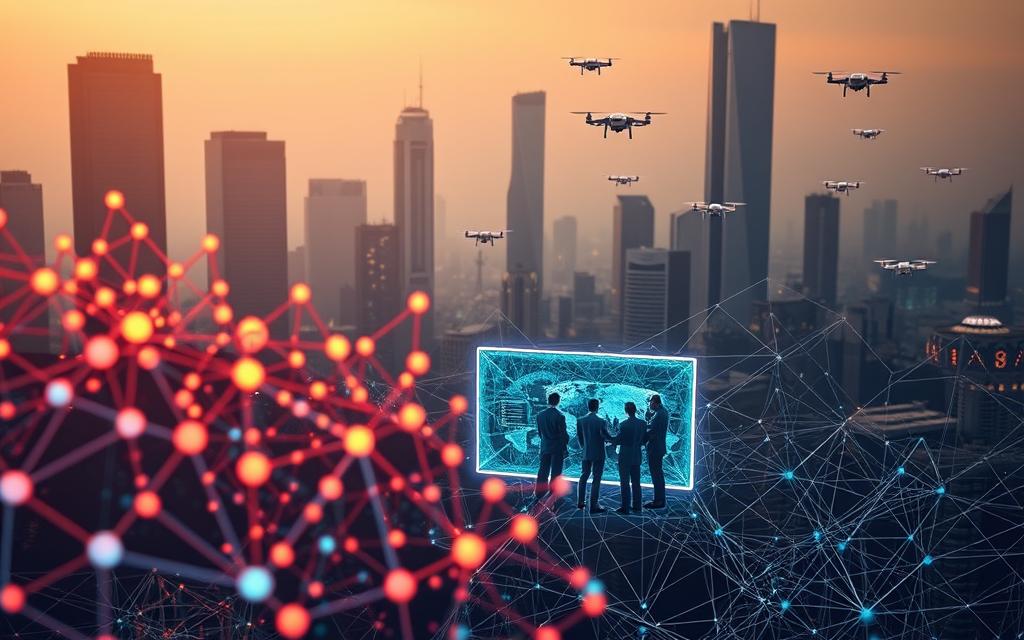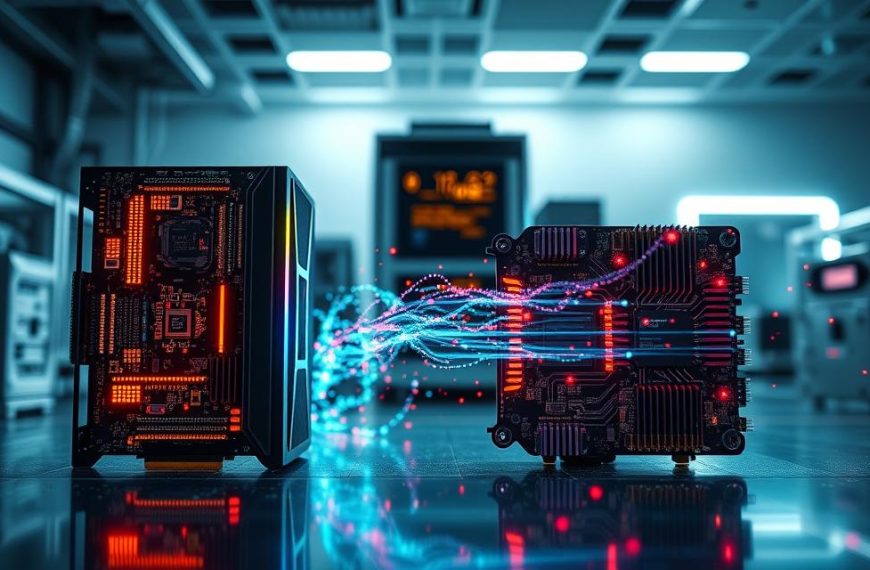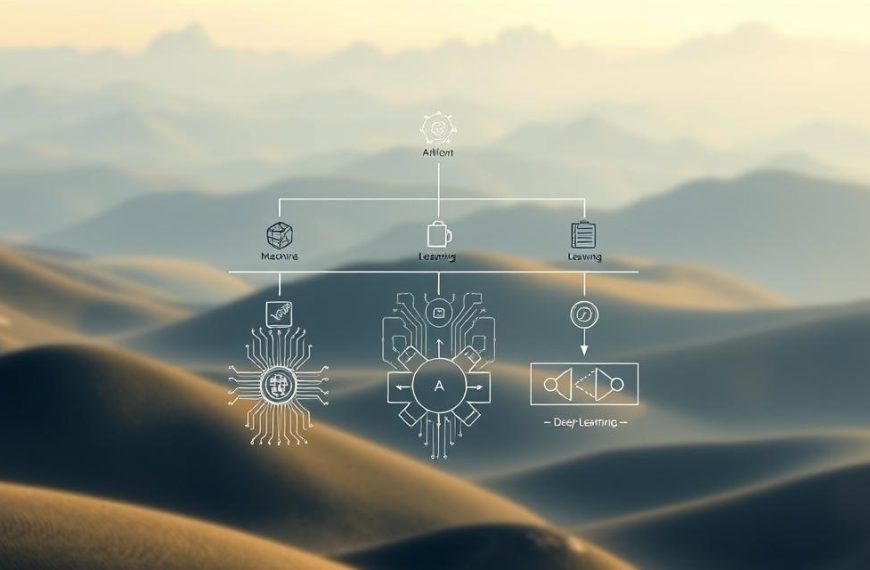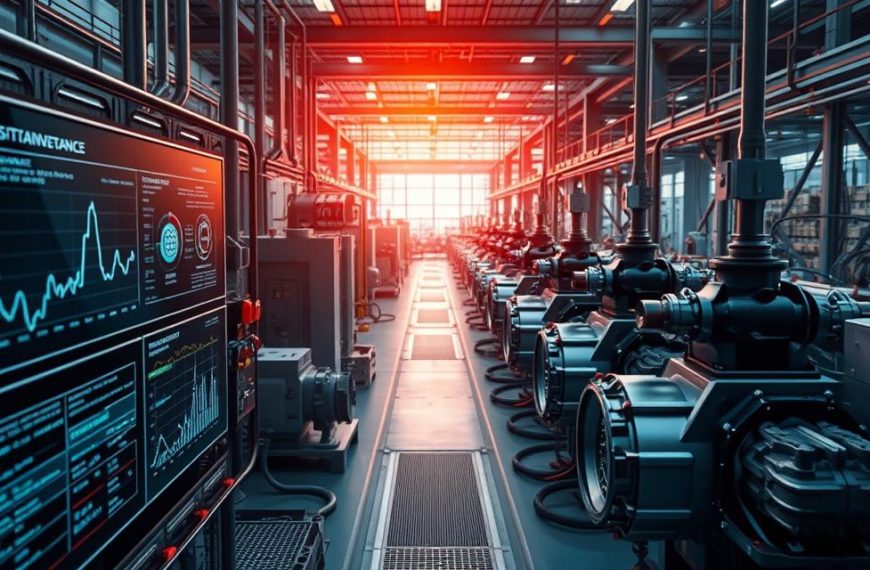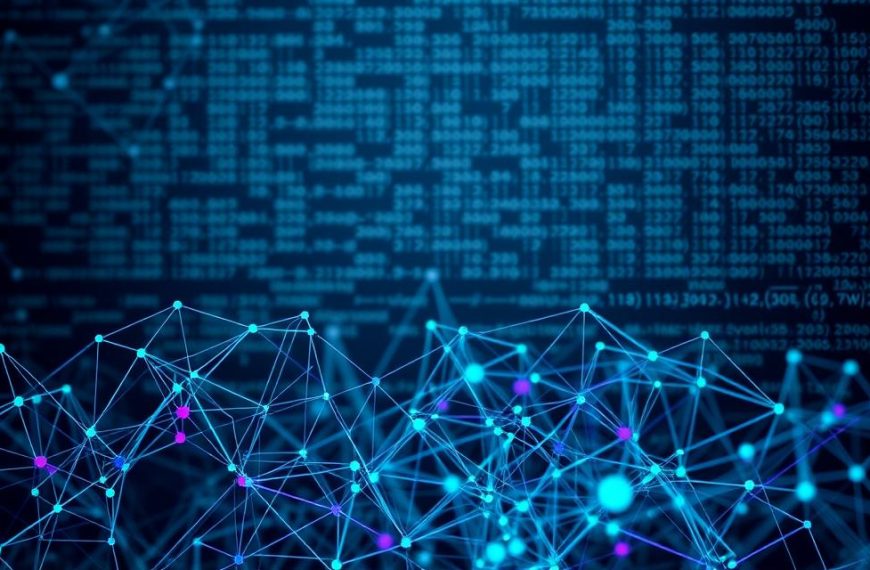Modern technology’s most revolutionary force lies in deep learning, a specialised branch of artificial intelligence reshaping how systems process information. Unlike conventional programming, this approach utilises layered neural networks – digital structures inspired by biological brains – to analyse patterns autonomously.
From voice-activated telly remotes to self-driving vehicles, these algorithms power countless innovations Britons interact with daily. They detect fraudulent card activity before customers spot discrepancies and enable generative tools crafting text or images through sophisticated data interpretation.
The magic stems from how silicon neurons adjust their connections based on input streams. Each artificial synapse strengthens or weakens through continuous exposure, mimicking human cognitive development. This dynamic adaptability allows machines to tackle complex tasks – like real-time language translation – without step-by-step coding.
Such advancements mark a seismic shift in computational capability. Where traditional software follows rigid rules, deep learning systems evolve through experience. They’re not just tools but collaborators, handling analytical heavy lifting so humans focus on creative strategy.
As we peel back these technical layers, the transformative potential becomes clear. Subsequent sections will explore how this technology outpaces earlier methods and why its role in modern AI demands closer examination.
Introduction to Deep Learning
The digital revolution’s backbone lies in artificial intelligence, evolving from theoretical concepts to practical solutions. Early AI research focused on symbolic systems, but breakthroughs in computational power and data availability shifted focus to neural networks. These layered architectures now drive innovations across industries, redefining problem-solving approaches.
The Rise of Artificial Intelligence
AI’s journey began with Alan Turing’s foundational work, progressing through rule-based systems in the 1980s. The 2010s saw machine learning dominate, using statistical methods to improve task performance. Three critical developments catalysed progress:
- Graphical processing units (GPUs) enabling faster computations
- Massive datasets from digitised services
- Open-source frameworks like TensorFlow democratising access
Deep Learning in Modern Technology
Today’s systems process unstructured inputs – from CCTV footage to voice recordings – without manual programming. NHS hospitals employ these algorithms for faster cancer detection, while London’s transport networks use them for predictive maintenance. Key advantages include:
| Aspect | Traditional ML | Deep Learning |
|---|---|---|
| Data Handling | Structured formats | Raw, unstructured inputs |
| Feature Extraction | Manual engineering | Automatic learning |
| Application Scope | Limited pattern recognition | Complex tasks like real-time translation |
British fintech firms leverage these capabilities for fraud detection, analysing millions of transactions to spot anomalies. As processing power grows, so does deep learning’s potential – from optimising energy grids to personalising education platforms.
What is the definition of deep learning?
Sophisticated algorithms mimicking neural structures drive today’s intelligent systems. These multi-layered architectures process information through interconnected nodes, evolving beyond rigid programming. Unlike conventional methods, they autonomously refine their understanding through exposure to data streams.
Core Concepts and Terminology
Artificial neural networks form the backbone of these systems. Each network contains:
- Input layers receiving raw data
- Hidden layers transforming information
- Output layers delivering predictions
Nodes within layers communicate via weighted connections. These weights adjust during training, strengthening accurate pathways. Activation functions determine if signals progress, enabling non-linear processing.
| Feature | Traditional ML | Deep Learning |
|---|---|---|
| Layer Depth | 1-2 layers | 3+ layers (often hundreds) |
| Feature Engineering | Manual | Automatic |
| Data Complexity | Structured | Raw/unstructured |
This layered approach allows hierarchical learning. Initial layers detect edges in images, while deeper ones recognise complex shapes. British researchers utilise this capability for weather forecasting, analysing satellite patterns more accurately than ever.
Evolution of Neural Networks
Neural networks have navigated decades of breakthroughs to become AI’s driving force. Early models faced scepticism due to computational limits, but persistent innovation transformed them into indispensable tools. This progression mirrors Britain’s railway evolution – from steam prototypes to high-speed networks.
Historical Developments
The journey began in 1958 with Frank Rosenblatt’s perceptron, a single-layer network recognising basic patterns. By the 1980s, multi-layer architectures emerged but struggled with training complexity. Three critical advancements changed this:
- Backpropagation algorithms (1986) enabling error correction across layers
- GPUs (2000s) accelerating matrix calculations
- ImageNet competition (2012) proving deep learning’s image classification superiority
| Aspect | Early Neural Networks | Modern Deep Learning |
|---|---|---|
| Layers | 1-2 | 100+ |
| Data Handling | Thousands of samples | Millions of unstructured inputs |
| Applications | Basic digit recognition | Real-time speech translation |
Milestones in Deep Learning
AlphaGo’s 2016 victory against Lee Sedol demonstrated strategic decision-making capabilities. Transformers (2017) revolutionised natural language processing, powering tools like GPT-3. British researchers at DeepMind later applied these architectures to protein folding, solving medical mysteries.
Today’s systems learn from raw data without manual labelling – a leap from traditional machine learning. Cambridge scientists use this autonomy to analyse climate patterns, predicting extreme weather events weeks in advance. Each milestone builds upon previous breakthroughs, creating an accelerating innovation cycle.
Understanding Deep Learning Models and Algorithms
Contemporary AI systems rely on specialised architectures tailored for distinct computational challenges. These frameworks process information through layered structures that evolve with exposure to data, enabling autonomous decision-making across industries.
Types of Deep Learning Models
Four primary architectures dominate modern applications:
- Feedforward networks: Process data in one direction, ideal for fraud detection
- Convolutional models: Excel at image recognition through spatial hierarchy analysis
- Recurrent structures: Handle sequential data like speech or stock prices
- Generative systems: Create original content through adversarial training
| Model Type | Data Specialisation | Common Use Cases |
|---|---|---|
| Convolutional | Visual inputs | Medical imaging analysis |
| Recurrent | Time-series data | London Underground predictive maintenance |
| Generative | Multimodal content | Marketing copy generation |
Algorithmic Techniques and Processes
Training these architectures involves gradient descent optimisation, adjusting neural weights to minimise errors. Regularisation methods like dropout prevent overfitting, ensuring models generalise well to new data.
Forward propagation calculates predictions, while backpropagation updates parameters based on performance gaps. British fintech firms employ these techniques to refine fraud detection systems, processing millions of transactions daily with increasing accuracy.
Exploring Deep Learning Architectures
Cutting-edge AI achievements stem from specialised architectural designs solving distinct computational challenges. Three frameworks dominate contemporary systems: convolutional structures for visual analysis, recurrent mechanisms for sequential data, and transformer-based approaches revolutionising language tasks.
Convolutional Neural Networks (CNNs)
CNNs excel at interpreting visual data through layered feature extraction. Convolution layers scan images using filters that detect edges, textures, and complex patterns. Pooling operations then reduce spatial dimensions while preserving critical information.
British hospitals employ these models for analysing X-rays, achieving 94% accuracy in tumour recognition. Their hierarchical processing mimics human visual cognition, enabling applications from facial recognition to autonomous vehicle navigation.
Recurrent Neural Networks (RNNs)
Sequential data processing demands memory retention across time steps – RNNs’ specialty. Hidden states preserve context between elements in speech, text, or financial sequences. Long Short-Term Memory (LSTM) variants overcome vanishing gradient issues in longer chains.
London-based fintech firms use these networks for predicting stock trends, processing minute-by-minute market fluctuations. Their ability to handle variable-length inputs makes them ideal for real-time translation systems and voice assistants.
Transformer Models
Transformers abandoned sequential processing for parallel computation through attention mechanisms. This architecture weights relationships between all input elements simultaneously, revolutionising natural language processing.
Cambridge researchers applied transformer-based systems to decode medieval manuscripts, achieving unprecedented character recognition accuracy. The technology underpins tools like GPT-4, enabling coherent text generation across diverse subjects.
| Architecture | Specialisation | Key Mechanism | UK Application |
|---|---|---|---|
| CNN | Visual data | Convolution layers | NHS medical imaging |
| RNN | Time-series | Memory cells | Transport delay prediction |
| Transformer | Language tasks | Attention weights | Legal document analysis |
Hybrid approaches now merge these architectures’ strengths. A Bristol University team combined CNNs with transformers for satellite image analysis, enhancing weather prediction models. As deep learning evolves, such integrations push AI capabilities beyond single-domain expertise.
Natural Language Processing and Transformers
Language bridges human thought and machine comprehension in today’s AI-driven world. Natural language processing (NLP) has evolved from rigid rule-based systems to dynamic deep learning models that interpret context, sentiment, and nuance. This transformation enables machines to parse legal documents, draft emails, and even compose poetry with human-like fluency.
Role of NLP in Deep Learning
Modern NLP systems analyse text through layered neural networks rather than predefined grammar rules. They detect sarcasm in social media posts and extract key points from medical journals. British universities employ these models to transcribe historical archives, preserving cultural heritage through automated digitisation.
Three critical capabilities distinguish contemporary NLP:
- Contextual understanding across paragraphs
- Real-time translation between 100+ languages
- Adaptation to regional dialects and slang
Benefits of Transformer Architectures
Transformer models process entire sentences simultaneously, unlike older sequential methods. Their attention mechanisms identify relationships between distant words, crucial for interpreting complex texts. This parallel processing slashes training times while improving accuracy in tasks like fraud detection.
| Aspect | RNNs | Transformers |
|---|---|---|
| Processing Style | Sequential | Parallel |
| Context Handling | Limited memory | Full-sentence analysis |
| UK Application | Basic chatbots | Ofsted report analysis |
London-based firms use transformer-powered tools to generate marketing copy tailored to regional audiences. These systems adapt tone and vocabulary based on target demographics, demonstrating natural language mastery once exclusive to human writers.
Artificial Neural Networks: Mimicking the Human Brain
Replicating the brain’s intricate architecture remains one of computing’s most ambitious goals. Artificial neural networks borrow principles from neuroscience to process information through interconnected digital neurons. This approach moves beyond rigid programming, enabling systems to adapt through exposure rather than explicit instructions.
Emulating Neuronal Structures
Biological neurons communicate via electrical impulses across synapses – connections strengthened through repeated use. Silicon counterparts mirror this through:
- Weights adjusting connection strength
- Biases setting activation thresholds
- Mathematical functions simulating signal transmission
Each artificial neuron processes inputs using weighted sums, passing results through activation functions. These components collectively enable pattern recognition in data streams, from diagnosing NHS scans to predicting energy demands.
| Biological Neurons | Artificial Neurons |
|---|---|
| Dendrites receive signals | Input layers gather data |
| Synapses adjust strength | Weights modify importance |
| Axons transmit outputs | Activation functions pass values |
While current systems lack biological complexity, they demonstrate remarkable pattern-matching capabilities. Cambridge researchers recently developed networks recognising early-stage dementia through speech analysis – a task requiring nuanced interpretation.
Key limitations persist. Human brains process information with unmatched energy efficiency, whereas artificial versions demand substantial computational power. Ongoing studies explore neuromorphic chips that mimic neural plasticity, potentially bridging this gap.
Training Deep Learning Models: Backpropagation & Forward Propagation
Mastering neural network training requires understanding two core processes governing how models refine their predictive capabilities. These mechanisms transform raw data into actionable insights through iterative adjustments.
Mechanisms of Learning and Error Correction
Forward propagation initiates the learning cycle. Inputs travel through successive layers, with each node applying mathematical operations to transform values. This hierarchical processing builds complex representations, enabling systems to recognise patterns in unstructured data.
When predictions miss targets, the backpropagation algorithm triggers corrective measures. It calculates error gradients using differential calculus, then adjusts connection weights inversely proportional to their contribution inaccuracy. This backward pass fine-tunes the network’s decision-making pathways.
| Process | Direction | Primary Function | Key Challenge |
|---|---|---|---|
| Forward Propagation | Input → Output | Prediction generation | Information loss |
| Backpropagation | Output → Input | Weight adjustment | Vanishing gradients |
Modern solutions combat gradient issues through techniques like ReLU activation functions. Batch normalisation further stabilises training by standardising layer inputs. British AI labs employ these methods to accelerate pharmaceutical research, reducing drug discovery timelines significantly.
The interplay between forward and backward passes enables continuous improvement. Each iteration nudges the model closer to optimal performance, demonstrating why these algorithms underpin contemporary machine intelligence breakthroughs.
Computational Power and Deep Learning Infrastructure
The backbone of modern AI breakthroughs lies in computational muscle. Training deep learning models demands high-performance GPUs capable of crunching billions of calculations per second. These processors excel at parallel tasks, handling large amounts of image, text, and sensor data simultaneously.
Cloud-based solutions now democratise access to necessary resources. Platforms like AWS and Azure offer distributed computing clusters, slashing costs for British startups. Popular frameworks – TensorFlow, PyTorch, JAX – optimise code for multi-GPU environments, though scaling requires meticulous orchestration.
Managing hardware remains a key challenge. Each additional GPU increases power consumption and cooling needs, impacting both budgets and carbon footprints. Cambridge-based AI labs report spending 40% of project time on infrastructure tuning rather than model development.
Strategic partnerships help organisations navigate these hurdles. NHS trusts collaborate with cloud providers to process medical scans without massive upfront investments. As learning systems grow more complex, efficient resource management becomes as crucial as algorithmic innovation.

